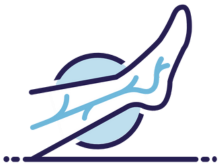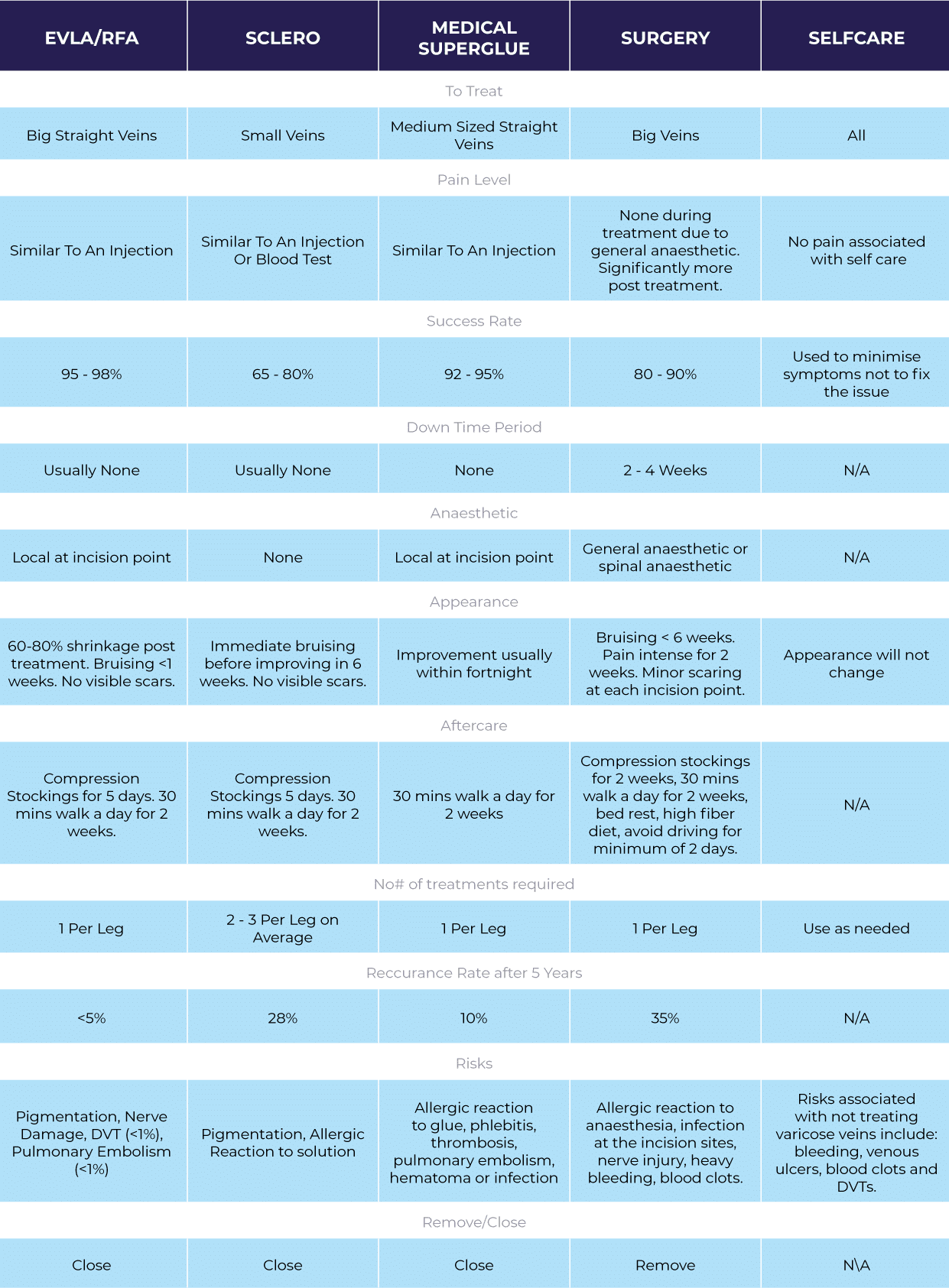At The Vein Institute, we use the latest technology from Europe and the USA to provide the most advanced non-surgical varicose veins treatment options. Our team of highly skilled doctors are passionate about getting the best possible results and ensuring a positive experience for all patients.
Compare Treatments
The table below is a simple snapshot of all the varicose veins treatment options.
For more information about our costs, visit our Varicose Vein Treatment Pricing page.
Have questions about the treatments available at The Vein Institute?
We have listed some of our most asked questions to the right. If you would like to speak to someone please contact us on 0420102637 or make an appointment.
What type of non-surgical treatment options do you offer?
Endovenous Therapy: Also known as endovenous laser ablation or radiofrequency ablation. We perform these treatments comfortably in our clinic with regional anaesthetic. They are minimally invasive methods to treat larger varicose veins and are considered the gold standard – requiring no hospitalisation or general anaesthetic.
Venaseal “Medical Super Glue”- Venaseal is a modern, non-surgical treatment. Specialists use a medical adhesive to treat varicose veins. As the medical superglue sets within minutes, there is a faster healing process than is sometimes associated with other treatments.
ClariVein: This is a special catheter with a 360 degree rotating tip. It delivers sclerosant deeper into the varicose vein wall, allowing us to use it on larger veins than traditional sclerotherapy allows.
Do you treat spider veins?
What about traditional remedies or vitamins?
Do I need to prepare for the procedure?
Second, take any of your normal medications – unless your doctor specified otherwise.
Third, drink at least 2 glasses of water (around 500 ml). Staying hydrated will reduce the risk of blood clots and minimise common symptom side effects like aches and swelling.
Fourth, you should wear loose-fitting pants because we will wrap compression bandages after the procedure.
Lastly, avoid shaving your legs the morning of the treatment.
How long will the laser procedure take?
Will the laser procedure be painful?
What is the recovery plan?
- Minimal to no downtime or time away from work. Your doctor may advise you to take a few days off if your job if it involves heavy lifting or long hours of standing.
- You can drive after the procedure if you haven’t taken any medications to reduce anxiety.
- We advise against long distance (5+ hours) travel for around 4 weeks after treatment.
- We recommend that all patients wear compression stockings or bandages for a minimum of five days after treatment to assist the healing process.
- If there is any discomfort following the treatment, your doctor may recommend pain reliever medications.
Do I need to follow up after treatment?
Can I continue to train at the gym?
How often do I need to treat varicose veins?
Note: If you have a family history of the disorder, there is a chance new varicose veins will form.










